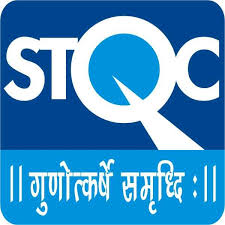Written records of contacts between India and China date back to at least 2nd century B.C. Such contacts at the level of people through commerce got a fillip with the advent of Buddhism into China from India in the first century A.D. under imperial patronage. A Chinese monk, Fa Xian (Fa-Hsien, AD 399-414), visited India in AD 402, stayed for 10 years, and after his return translated many Sanskrit, Buddhist texts into Chinese. His record of journeys Fo Guo Ji (Record of Buddhist Kingdoms) is an important historical source. Kumarajiva, a scholar in Vedas as well as Buddhist Sutras, was born of Chinese mother and Indian father. His translations of Sanskrit sutras into Chinese are valued even today. In the 5th Century AD Bodhidharma, a South Indian monk, became the first patriarch of the Shaolin Monastery in China. Xuan Zang (Hiuen Tsang) visited India during Harsha Vardhana's reign in the 7th Century AD, in search of Buddhist scriptures. His journey became part of traditional Chinese lore when narrated in a later period book called "A Journey to the West".
The decline of Buddhism in India and spread of colonialism in both the countries resulted in diminished cultural exchanges. However, when people of both the countries started searching for new answers to new questions, old friendship was revived. The respective national struggles for freedom saw resumption of contacts, mutual interest, and feelings of solidarity. Landmark events of this period are Kang Youwei's stay in India (1890s), Tagore's visit to China (1924), setting up of Cheena Bhawan in Viswabharati University by Professor Tan Yunshan under Tagore's guidance (1937), sending of the Aid China Medical Mission, which included Dr. Dwarakanath Kotnis, by the Indian National Congress (1938), and Xu Beihong's visit to Shantiniketan (1939-40).
The early fifties and the Hindi-Chini Bhai Bhai phase of 1950s witnessed a further strengthening of these ties. Indian films like Awaara, Caravan and Do Bigha Zameen as well as stars like Raj Kapoor and Nargis left a lasting impression on Chinese audiences. The resumption of political relations in 1980s has provided an impetus to cultural exchanges.
INDIA RELATED HISTORICAL SITES IN CHINA
Grottoes
DUNHUANG: In Gansu province, an oasis town at the eastern edge of the Taklamakan desert. Was important along the ancient Silk Route and has many imprints of Buddhism from India, including the Thousand Buddha Cave and the Mogao Grottoes with impressive frescoes reminiscent of Ajanta, from 366 A.D till the 10th century.
XINJIANG: Ancient architectural art in Xinjiang was greatly influenced by the Indian Buddhism that are reflected in grottoes built on cliffs, temples and towers found in large numbers across Xinjiang. Some important locations are Bezeklik in Turfan, Kucha, Kizil, Cherchelik and Niya.
LUOYANG: Near Luoyang city in Henan province, the Longmen Caves are one of China's four major Buddhist caves. Construction began in the northern Wei dynasty (488 AD) and lasted through the Tang and Song dynasties until the 14th century. Consists of over 100,000 statues, some 40 pagodas and 3600 tablets.
DAZU: Dazu Grottoes are cliff-side carvings in Chongqing municipality, of which the Baoding Grotto is the largest and the best preserved. Construction began in the Tang dynasty (650A.D.) and continued through the Ming and Qing. Includes more than 50,000 Buddhist, Taoist and Confucian rock carvings.
DATONG: Datong in Shanxi province is famous for the Yungang Grottoes, hewn in a cliff side in a honeycomb pattern, forming grottoes that stretch about a kilometre. Belonging to the Northern Wei period (453-494 A.D.), it consists of about 1,000 grottoes and some 100,000 Buddhist statues.
Temples
Five Pagoda temple (Wuta Si), Beijing: Built in the reign of Emperor Yongle of the Ming Dynasty (1403-1424), the temple is modelled after the Bodhgaya temple. Attracted countless pilgrims each year during the Ming and Qing dynasties. Carvings in Sanskrit and Tibetan. The pagoda was heavily damaged during the Cultural Revolution and the earthquake at Tangshan in 1976. Restored since 1979.
White Horse Temple (Baima Si), Luoyang: Northeast of Luoyang in Henan province, the original monastery at this site, constructed in AD 75, was one of the first Buddhist temples in China. Legend has it that two monks from India riding a white horse delivered the Buddhist sutras to Luoyang--hence the temple's name. Dharmaratna and Kasyapa Matanga, the first Indian teachers of Buddhism in China in the first century AD, stayed at this temple. The buildings seen today date from the Ming dynasty. The Baimasi today is an active centre for Zen (Chan) Buddhism and a few monks still live on its grounds. At present, to celebrate the historical role of the Temple in bringing India and China together, Government of India is building an Indian style Buddhist shrine within the original temple complex.
Big and Little Goose Pagodas, Xi'an: Originally built in 589 A.D. in the Sui Dynasty in China's ancient capital Chang'an (today's Xi'an in Shaanxi province), the Big Goose Pagoda is more famous as the temple reconstructed by the Tang Emperor for Xuan Zang to stay and translate the original Sanskrit texts which he brought from India. The texts were subsequently stored here. Xuan Zang was also the temple's abbot. The little Goose Pagoda was built in 709 AD and was associated with the Buddhist monk Yijing, who translated some 400 volumes of Sanskrit scriptures brought from India.
Famen Si, Fufeng: Near Xi'an, and founded in the Western Wei dynasty, but assuming greater importance during the Tang dynasty (618-907 A.D.), the centrepiece of the relics at Famen Si, or the Gate of Dharma, was a set of four finger bones that were believed to be those of Buddha himself. The reliquary objects lay undisturbed for centuries, until the 1980s, when the pagoda collapsed and renovation revealed three stone chambers beneath the foundations.
Shaolin Temple: Near Dengfeng in Henan province, the Shaolin Temple was established in the 6th century AD by the Indian Buddhist master, Bodhidharma (Damo, in Chinese) as a great centre of martial arts. Under Bodhidharma, Shaolin flourished as a centre of Zen Buddhism, which became the most influential branch of Chinese Buddhism after the Tang.
Kong Xiang Temple, Sanmenxia: Built beside Bodhidharma's grave in Sanmenxia in Henan province, the Kong Xiang temple recently held a large-scale celebration of Bodhidharma's 1500th birth anniversary.
Kaiyuan Temple, Quanzhou: Built in 7th century AD in Quanzhou, which was founded by Emperor Kaiyuan in the Tang Dynasty, Kaiyuan Temple's Mahavira Hall has two carved stone poles bearing carvings of Shiva. The poles were apparently transported to Quanzhou from Indian temple nearby. Other unique stone relics include a carving of a winged Buddha, an elephant offering flowers to a Shivalinga and a standing statue of Vishnu. Over 300 Hindu architectural and sculptural fragments have been identified in Quanzhou since they were first discovered in 1933. Since many fragments were found near the Tonghuai Gate as part of the city wall rebuilt in the Ming dynasty, it is likely that there was a Hindu temple in the south-eastern part of the city.
Remnants of Hindu temples are also believed to be in Lijiang in Yunnan province and at Fuzhou in Fujian province.
Memorials/ Museums
Dr. Kotnis Memorial, Shijiazhuang: A member of the Indian Medical Mission sent to China during the war with Japan, Dr. Kotnis' grave is presently at Shijiazhuang (Hebei province). A memorial in his name is located in the city's Martyr's Museum Park.
Museum of History, Xi'an: The museum has a large collection of Xuan Zang's scriptures.
Parsi Cemetery, Guangzhou: Remnants of an old Parsi cemetery discovered close to Guangzhou in southern China reveal the 18th and 19th century trading links between the Parsi community from India with southern China.
Tagore Museum, Hangzhou: Established by a Chinese scholar, Wei Fengjiang, who studied in Shantiniketan in the forties, the museum has memorabilia of Tagore's visit to China in 1924 and other objects.
Across the Hump Memorial, Kunming: Carries WW II collections from British India, when allied forces flew transport planes from Calcutta to Kunming to support the KMT-Communist United Front in the war against Japan.
Chengdu: The museum contains a collection of Pali scripture etchings on bamboo discovered near Chengdu in Sichuan province. Most of these scriptures are believed to have been originally brought from north-east India through the overland route and to have been etched on bamboo in China.
Qingdao: Buddhist scholar Fa Xian's (Fa Hyan) return voyage from India is commemorated near the port city of Qingdao in Shandong province where his ship, believed to have been drifted astray, managed to return after a long voyage from Sri Lanka and Indonesia.





























